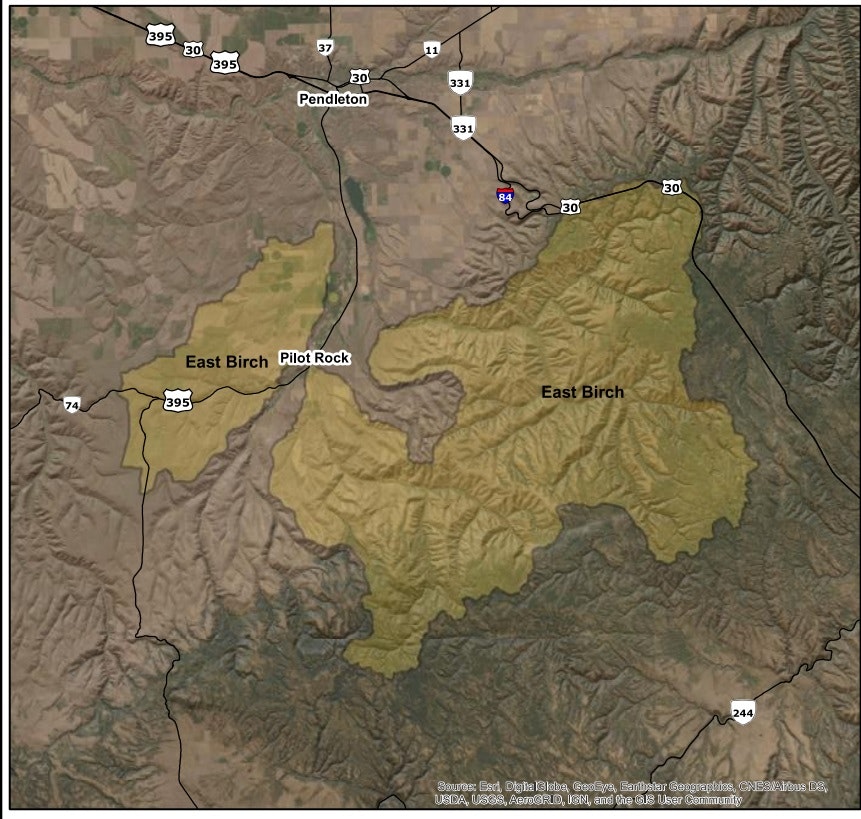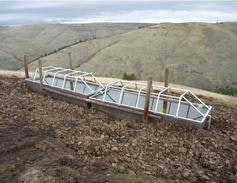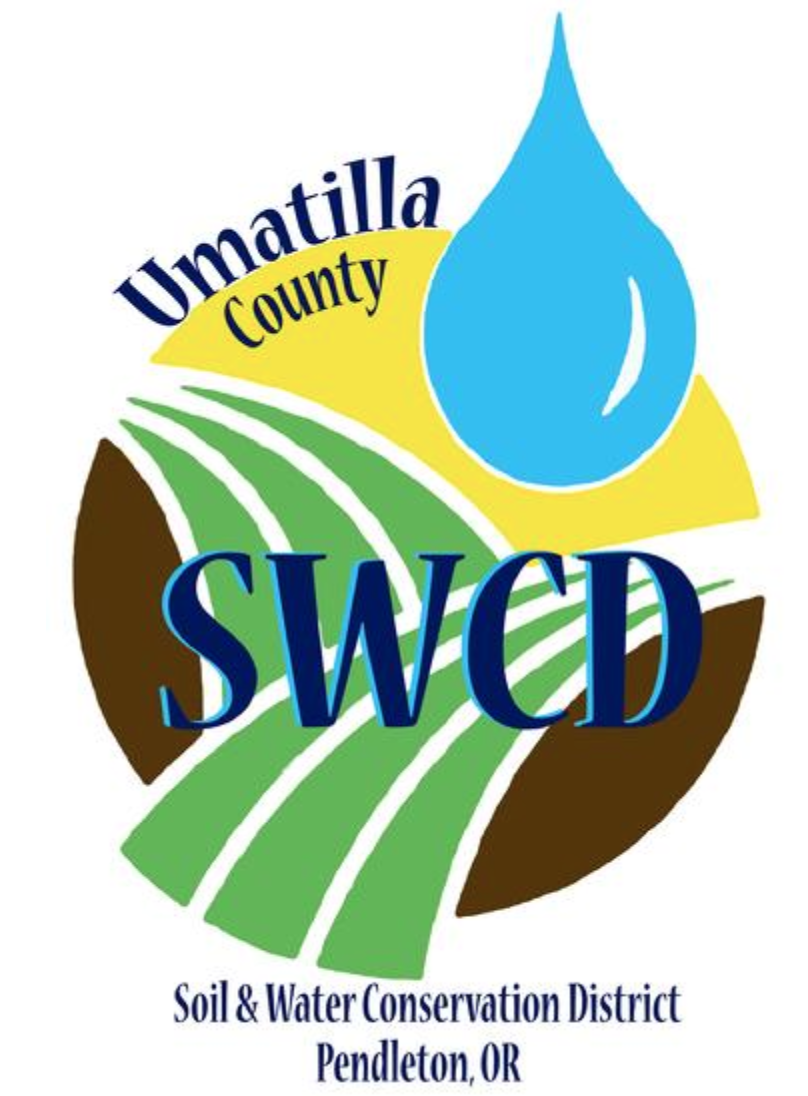Strategic Implementation Areas
Stay tuned for updates and more information on the Strategic Implementation Areas (SIA).
Strategic Implementation Areas are areas of focus selected by Oregon Department of Agriculture (ODA) and local partners throughout the state that will have focused outreach and effort put into education and implementation of projects to promote water quality and prevent or address water pollution while helping landowners adhere to regulations passed by the state legislature. These areas change every few years and are chosen because they have been identified by ODA as areas that could benefit the most from the technical knowledge and focused assistance from local agencies. These agencies include ODA, SWCDs and their partners: Oregon Watershed Enhancement Board (OWEB), USDA Conservation Reserve Enhancement Program (CREP), National Resource Conservation Service (NRCS), watershed councils and other local agencies all working toward better water quality.
The Agricultural Water Quality Act, passed in 1993 by our State Legislature, prompted the development and implementation of Strategic Implementation Areas (SIA). ODA has developed regulations and plans to keep Oregon’s agricultural activities from polluting our waters.
Since 1997, ODA has been working with local agencies to develop Agricultural Water Quality Management Area Plans and SIAs to ensure water quality for everyone, compliance with regulations and continued conservation that will benefit the landowners and communities now and in the future.
Through satellite imaging and comprehensive analysis, ODA identifies sites within the SIA that they deem to be potential participants that could benefit the most from assistance and participation. ODA then gives this information to the SWCD and we begin our outreach efforts. Our goal is to help landowners who have been identified by ODA to ensure compliance and water quality, and maximize their efficiency and conservation efforts.
The Umatilla Agricultural Water Quality Management Area Plan allows flexibility in the projects you choose.
The SWCD can help you choose recommended practices from the Area Plan that suit your property and work with your self-assessment. SWCD will help you choose technically sound and economically feasible methods for your project.
The newest SIA in the county is the Camas Creek Watershed.
For a site visit or more information, contact:
Kyle Waggoner
(541) 969-0423
.png?ixlib=rb-1.1.0&w=2000&h=2000&fit=max&or=0&s=954305d8a40ee726ee04b6db63a52382)
The two current SIA's in the county are on East Birch and McKay Creek outside Pilot Rock, along with Dry, Couse, and Pine Creek outside Milton-Freewater.


Examples of project types include:

- Livestock exclusion fencing for creeksides with off-stream water
- Streamside vegetation planting
- Erosion management
- Water gap development (livestock crossing)
- Manure management
- Hardening of a livestock heavy use area to reduce muddy conditions
The Umatilla County SWCD is in its first stage of outreach in the SIA. We are sending out letters, pamphlets and putting flyers up around our communities trying to make contact with landowners who may benefit from participating in a conservation project. If you have received one of these letters in the mail or seen one of our flyers posted around town and are interested in pursuing a project or simply want to know more, please take a moment to look over the information we have included on this webpage.
Here is a Landowner Self-Assessment Tool to help you get started and see if your property could benefit from participation. If you want to get involved or have more questions, please call, email or come into the office and talk with us. We welcome anyone who wants to learn more, and we encourage you to please reach out and see how we can help you help your land and community.
Read the ODA's Landowner Self-Assessment Tools Form
Kyle Waggoner, District Manager, is Umatilla County's OWEB Small Grants representative and is here to assist you with a project.
Steps for SIA Projects:
1. Contact:
- The landowner may contact the SWCD or the SWCD may contact the landowner
- The SWCD and landowner will arrange a site visit convenient for the landowner
2. Site Visit:
- The site visit will include an explanation of the process, pertinent questions to the landowner and initial photos of the project site
3. Application Completion and Submission:
- Once eligibility is determined, SWCD staff will complete and submit an OWEB small grant application asking for coverage of 75% of project costs, and the landowner to cover 25% in match (which can be in labor, materials, etc.)
- If no financial assistance is requested, technical assistance can be provided at this point
4. OWEB Review and Determination:
- The OWEB Small Grants Team will review the application on the next review date (grant cycles renew approximately every three months)
5. Grant Agreement:
- Upon approval by the OWEB Small Grants Team, a unique grant agreement will be created for the project
- SWCD staff will review the grant application and agreement with the landowner, all parties will sign if in agreement, and the documents will be submitted to OWEB for final review
6. Final Approval and Implementation:
- Once the project is approved by OWEB, work can begin on the property
7. Monitoring and Review:
- All projects will require a Year-Two Status Report, including the condition and success of the project, as well as project photos
- Any other requirements will be determined by each unique grant agreement
The Small Grant application process is a low-complexity process offered by OWEB. However, the length of the grant process can vary due to the duration and outcomes of each step involved.
You may also qualify to participate in the CREP program. In addition to contributing to improvement of the environment in multiple ways, those enrolled in CREP receive an annual rental payment for their enrolled acres and may be eligible for additional incentives. Additional funding can help offset the costs associated with installing the conservation practices.
Additional programs are available and eligibility can be determined at the initial site visit.

